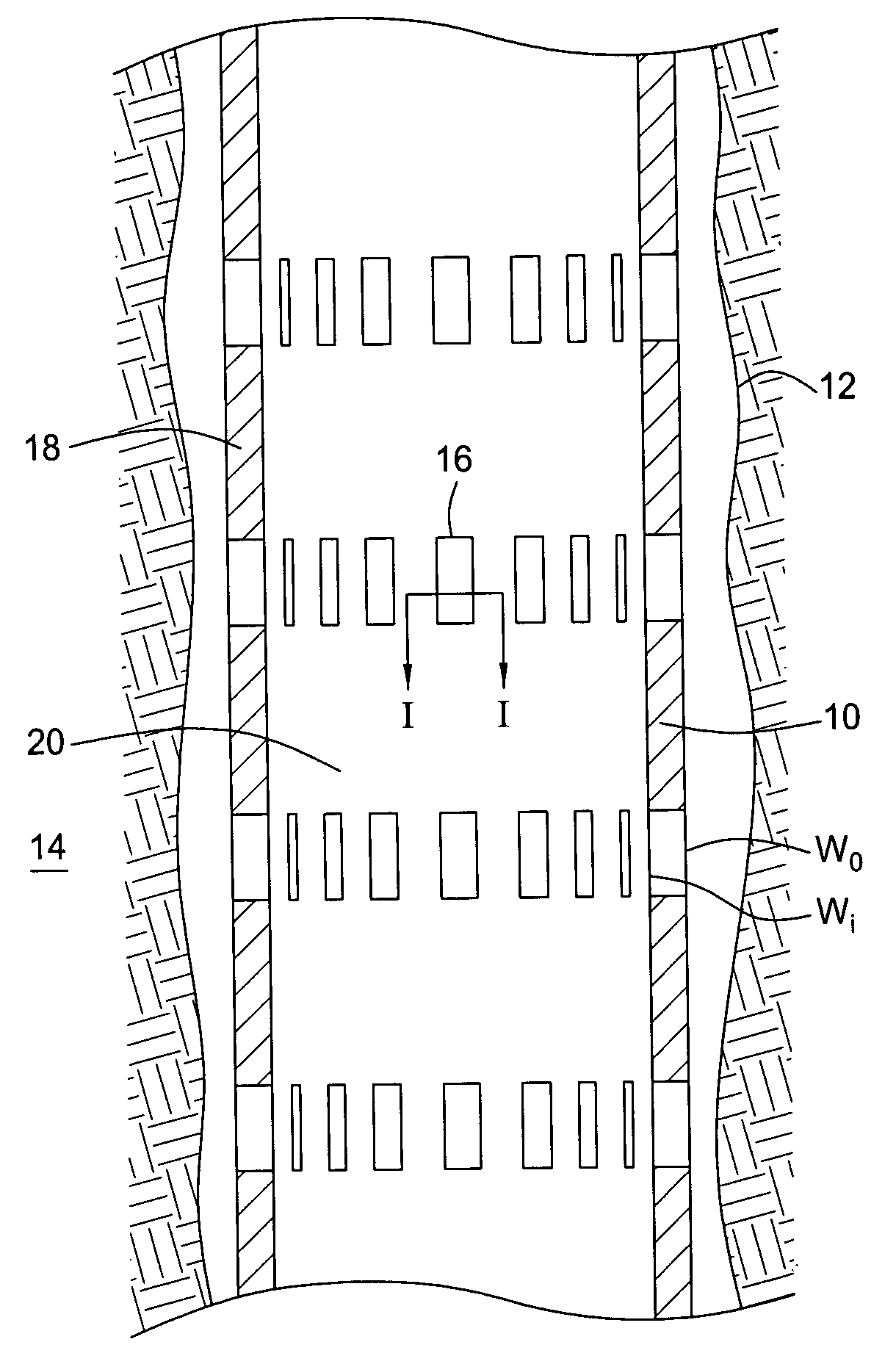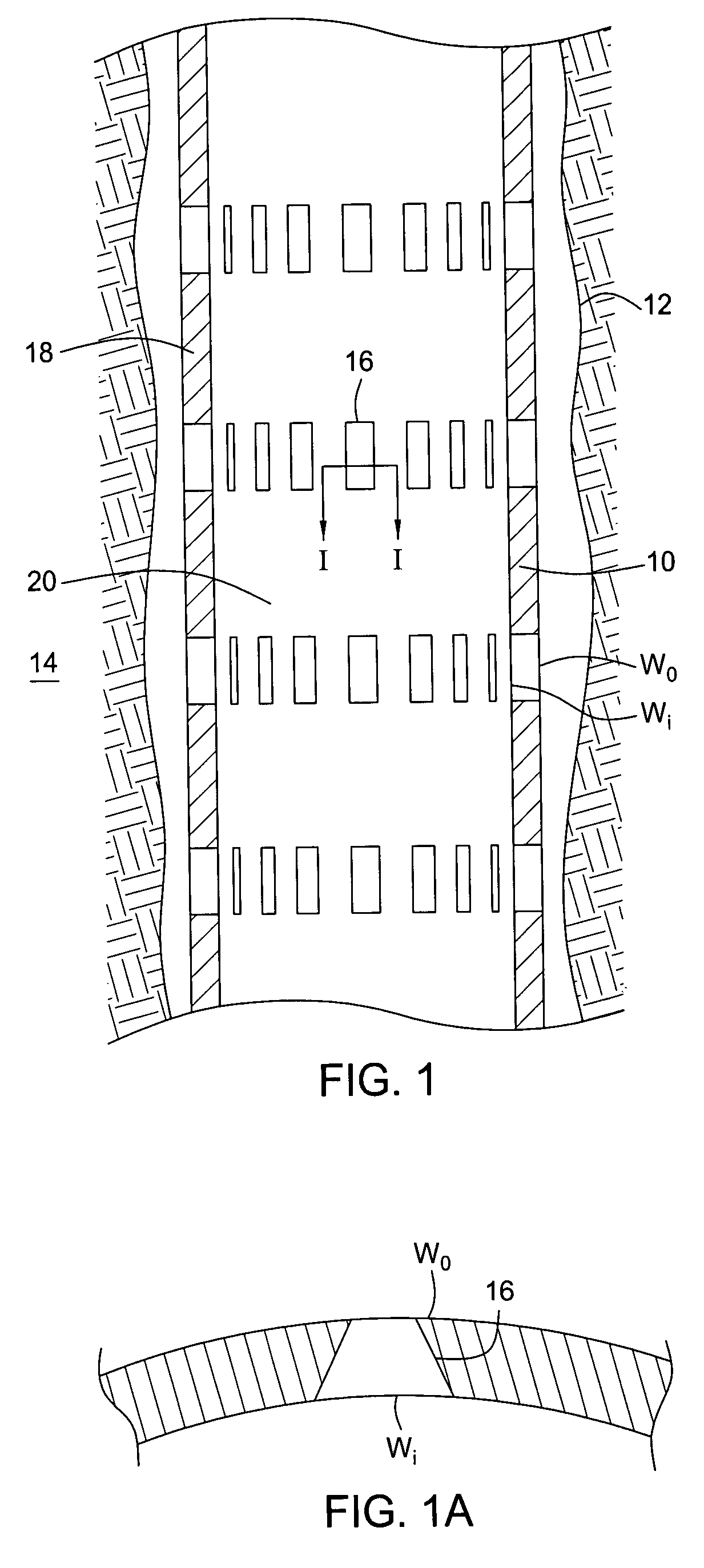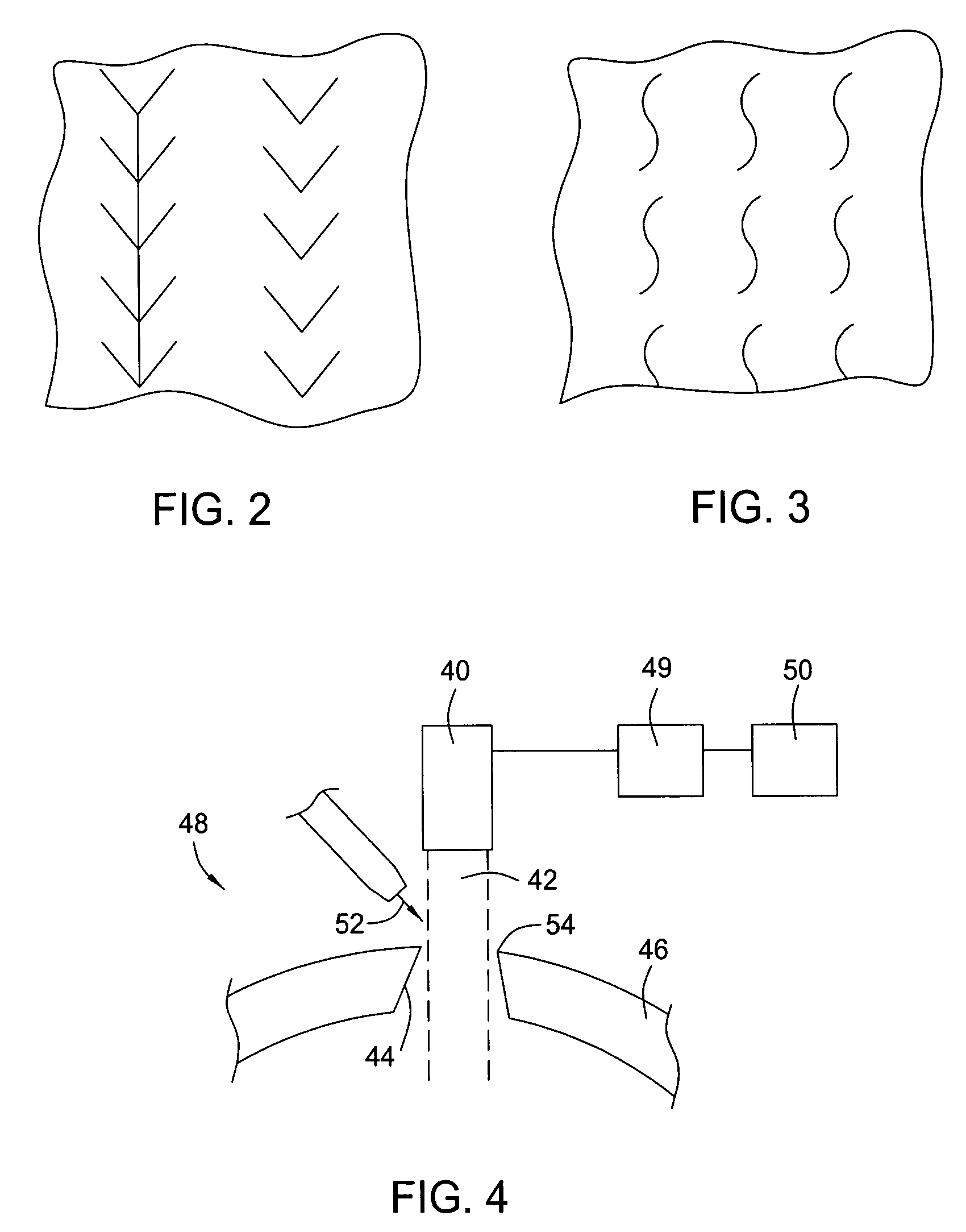Downhole filter
a filter and filter body technology, applied in the field of downhole filters, can solve the problems of affecting the formation itself, affecting the operation of the filter body, so as to simplify the manufacture of the expandable filter arrangement and minimize the risk of tearing
- Summary
- Abstract
- Description
- Claims
- Application Information
AI Technical Summary
Benefits of technology
Problems solved by technology
Method used
Image
Examples
Embodiment Construction
[0038]Reference is first made to FIG. 1 of the drawings, which is a schematic sectional view of a sand control device in the form of downhole filter 10, in accordance with an embodiment of an aspect of the present invention. The filter 10 is shown located in a wellbore 12 which has been drilled from surface to intersect a sand-producing hydrocarbon-bearing formation 14.
[0039]The filter 10 comprises a metal tubular in which a large number of longitudinally-extending slots 16 have been cut. The slots 16 have a keystone or trapezoidal form, that is the width of the slots increases from the exterior of the tubular wall W0 to the interior W1. This feature is shown in FIG. 1a, which is an enlarged sectional view of a slot 16 through line I—I of FIG. 1. As shown, the inner slot width W1 is greater than the outer slot width W0. The outer, minimum width W0 is selected to be smaller than the diameter of the particulates it is desired to prevent from passing from the formation 14, through the ...
PUM
| Property | Measurement | Unit |
|---|---|---|
| inner diameter | aaaaa | aaaaa |
| outer width | aaaaa | aaaaa |
| inner width | aaaaa | aaaaa |
Abstract
Description
Claims
Application Information
 Login to View More
Login to View More - R&D
- Intellectual Property
- Life Sciences
- Materials
- Tech Scout
- Unparalleled Data Quality
- Higher Quality Content
- 60% Fewer Hallucinations
Browse by: Latest US Patents, China's latest patents, Technical Efficacy Thesaurus, Application Domain, Technology Topic, Popular Technical Reports.
© 2025 PatSnap. All rights reserved.Legal|Privacy policy|Modern Slavery Act Transparency Statement|Sitemap|About US| Contact US: help@patsnap.com



